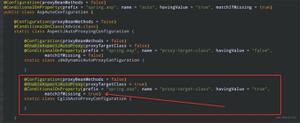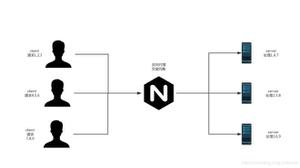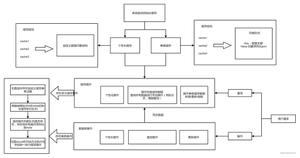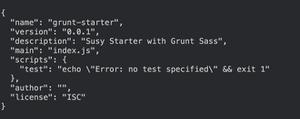SpringBoot有啥高科技?怎么支持SpringMvc的?

前言:刚毕业我就接触到了SpringBoot,当初感觉必成大器,第一印象就是内置了所有环境,打完包丢哪里都能跑起来,简化了tomcat Xml配置的一系列部署操作
1.SpringMvc XML配置
说到配置SpringMvc,大家第一时间反应就是xml配置,目前国内的各类博客或者各类老师都是套用这种方式,一直都是认为这种方式是唯一的方式,再说Spring官方一直支持。
1.1 配置web.xml
web.xml是servlet容器的配置文件,当启动一个WEB项目时,servlet容器首先会读取项目中的webapp/WEB-INFO文件夹的web.xml配置文件里的配置,主要用来配置监听器listener,servlet,上下文参数context-param。
<!-- 配置监听器 --> <listener>
<listener-class>org.springframework.web.context.ContextLoaderListener</listener-class>
</listener>
<!-- 配置DispatcherServlet -->
<servlet>
<servlet-name>dispatcherServlet</servlet-name>
<servlet-class>org.springframework.web.servlet.DispatcherServlet</servlet-class>
</servlet>
<!-- ServletContext参数 -->
<context-param>
<param-name>contextConfigLocation</param-name>
<param-value>/WEB-INF/spring-config/*.xml</param-value>
</context-param>
ContextLoaderListener(上下文加载监听) 继承了ServletContextListener(Servlet上下文监听),当ServletContext的生命周期发生变化会触发相应的事件
protected void configureAndRefreshWebApplicationContext (ConfigurableWebApplicationContext wac, ServletContext sc) {
//添加ServletContext
wac.setServletContext(sc);
//添加Spring*.xml
String configLocationParam = sc.getInitParameter("contextConfigLocation");
wac.setConfigLocation(configLocationParam);
customizeContext(sc, wac);
//读取配置加载,刷新Spring上下文
wac.refresh();
}
DispatcherServlet 用来接收SpringMVC所有请求的servlet程序,注册到Servlet容器中。
1.2配置applicationContext.xml
主要扫描业务类,AOP切面配置,事务配置,数据源配置等
<!--扫描包注解 不扫描@controller--><context:component-scan base-package="com.wangnian">
<context:exclude-filter type="annotation" expression="org.springframework.stereotype.Controller"/>
</context:component-scan>
1.3配置springmvc.xml
主要扫描Controller,拦截器,视图转换等
<!--扫描包注解 只扫描@Controller--><context:component-scan base-package="com.wangnian.controller" >
<context:include-filter type="annotation" expression="org.springframework.stereotype.Controller" />
</context:component-scan>
1.4 启动大概流程
在启动Servlet容器,会去读取web.xml配置文件注册Servlet并执行ServletContextListener的contextInitialized方法读取用户自定义的xml配置文件并创建bean,刷新Spring上下本。
2.SpringMvc 另外一种配置
2.1 怎么注册DispatcherServlet ?
猜想1:也是xml配置方式,Spring官网都把零xml的配置当成一种优势,那显然不是。
猜想2:@webservlet,我们找找DispatcherServlet这个类?居然没有@webservlet注解
那只能看看SpringMvc的文档,发现SpringMvc官方配置也推荐使用javaConfig的配置方式。
https://docs.spring.io/spring/docs/current/spring-framework-reference/web.html
public class MyWebApplicationInitializer implements WebApplicationInitializer { @Override
public void onStartup(ServletContext servletContext) throws ServletException {
//SpringWeb注解配置应用程序上下本
AnnotationConfigWebApplicationContext ac = new AnnotationConfigWebApplicationContext();
//注册一个或多个要处理的带注解的类
ac.register(AppConfig.class);
//spring上下文刷新
ac.refresh();
//创建DispatcherServlet
DispatcherServlet servlet = new DispatcherServlet(ac);
//servlet中注册DispatcherServlet
ServletRegistration.Dynamic registration = servletContext.addServlet("app", servlet);
registration.setLoadOnStartup(1);
registration.addMapping("/app/*");
}
}
onStartup方法会得到ServletContext,如果是jetty 就是jetty提供的 如果是tomcat 就是 tomcat。
AnnotationConfigWebApplicationContext是继承了上面的ConfigurableWebApplicationContext ,实例化IOC容器
AnnotationConfigApplicationContext不仅支持@Configuration注解的类,任何@Compnent注解的类或者 按照JSR-330注解的类都被AnnotationConfigApplicationContext支持 。
DispatcherServlet是通过new DispatcherServlet()出来的
然后在AppConfig上加入@ComponentSan注解扫描业务层和控制层的bean
2.2 onStartup啥时候能调到?
上面讲到了web.xml 是在servlet容器启动的时候加载的
那webApplicationInitializer应该也要在servlet容器启动的时候被加载到
是不是tomcat也学Spring一样得到所有WebApplicationInitializer的实现,然后调用onStartup。
但是他绝对不会这么干,因为WebApplicationInitializer是Spring提供的,一个实现Servlet规范的容器不可能依赖Spring的jar包。
接下来我们来看看SpringMvc的启动核心科技
首先tomcat是一个Servlet容器,遵循并实现了Servlet的规范,tomcat7之后是3.0的,在3.0的有个新的特性
就是它 :ServletContainerInitializer(Servlet容器初始化器)
在web容器启动时为提供给第三方组件做一些初始化的工作,例如注册servlet或者listener等。
前提是必须在对应的jar包的META-INF/services 目录创建一个名为javax.servlet.ServletContainerInitializer的文件,文件内容指定具体的ServletContainerInitializer实现类
一般伴随着ServletContainerInitializer一起使用的还有HandlesTypes注解,会在调用onStartup方法的时候会把所有实现的类集合传给你。
我们看看Spring的实现的 SpringServletContainerInitializer
@Override public void onStartup(@Nullable Set<Class<?>> webAppInitializerClasses, ServletContext servletContext)
throws ServletException {
//一个装WebApplicationInitializer实现的集合
List<WebApplicationInitializer> initializers = new LinkedList<>();
for (Class<?> waiClass : webAppInitializerClasses) {
//通过反射拿到HandlesTypes注解指定的class的实现类
initializers.add(ReflectionUtils.accessibleConstructor(waiClass).newInstance());
}
//进行排序
AnnotationAwareOrderComparator.sort(initializers);
//循环调用所有集合里的onStartup方法
for (WebApplicationInitializer initializer : initializers) {
initializer.onStartup(servletContext);
}
}
这是spring惯用方法,将所有实现WebApplicationInitializer的实现类,遍历执行onStartup方法
3.SpringBoot怎么配置的SpringMvc
看完SpringMvc的javaConfig之后是不是就大概清楚SpringBoot是怎么才能做到零配置的。
3.1 SpringBoot是怎么创建DispatcherServlet ?
在DispatcherServletAutoConfiguration静态类中声明了一个bean DispatcherServlet
protected static class DispatcherServletConfiguration { @Bean(name = DEFAULT_DISPATCHER_SERVLET_BEAN_NAME)
public DispatcherServlet dispatcherServlet(HttpProperties httpProperties, WebMvcProperties webMvcProperties) {
DispatcherServlet dispatcherServlet = new DispatcherServlet();
dispatcherServlet.setDispatchOptionsRequest(webMvcProperties.isDispatchOptionsRequest());
dispatcherServlet.setDispatchTraceRequest(webMvcProperties.isDispatchTraceRequest());
dispatcherServlet.setThrowExceptionIfNoHandlerFound(webMvcProperties.isThrowExceptionIfNoHandlerFound());
dispatcherServlet.setPublishEvents(webMvcProperties.isPublishRequestHandledEvents());
dispatcherServlet.setEnableLoggingRequestDetails(httpProperties.isLogRequestDetails());
return dispatcherServlet;
}
}
SpringBoot main方法启动的时候就检查是否是web项目,怎么检查呢?
对的 大家猜的对,就是尝试forName加载一下初始化这个写死的类路径javax.servlet.Servlet,如果能实例化就代表是。
类:WebApplicationType
if (ClassUtils.isPresent(WEBFLUX_INDICATOR_CLASS, null) && !ClassUtils.isPresent(WEBMVC_INDICATOR_CLASS, null) && !ClassUtils.isPresent(JERSEY_INDICATOR_CLASS, null)) {
return WebApplicationType.REACTIVE;
}
for (String className : SERVLET_INDICATOR_CLASSES) {
if (!ClassUtils.isPresent(className, null)) {
return WebApplicationType.NONE;
}
}
return WebApplicationType.SERVLET;
如果是Servlet类型就会使用AnnotationConfigServletWebServerApplicationContext去刷新spring上下文
/** * The class name of application context that will be used by default for non-web
* environments.
*/
public static final String DEFAULT_CONTEXT_CLASS = "org.springframework.context."
+ "annotation.AnnotationConfigApplicationContext";
/**
* The class name of application context that will be used by default for web
* environments.
*/
public static final String DEFAULT_SERVLET_WEB_CONTEXT_CLASS = "org.springframework.boot."
+ "web.servlet.context.AnnotationConfigServletWebServerApplicationContext";
这样DispatcherServlet被作为一个普通Bean被实例化并注册到IOC容器中。
3.2 SpringBoot是怎么在ServletContext中注册DispatcherServlet ?
在DispatcherServletAutoConfiguration类代码下面还有一个DispatcherServletRegistrationConfiguration类
protected static class DispatcherServletRegistrationConfiguration { @Bean(name = DEFAULT_DISPATCHER_SERVLET_REGISTRATION_BEAN_NAME)
@ConditionalOnBean(value = DispatcherServlet.class, name = DEFAULT_DISPATCHER_SERVLET_BEAN_NAME)
public DispatcherServletRegistrationBean dispatcherServletRegistration(DispatcherServlet dispatcherServlet,
WebMvcProperties webMvcProperties, ObjectProvider<MultipartConfigElement> multipartConfig) {
DispatcherServletRegistrationBean registration = new DispatcherServletRegistrationBean(dispatcherServlet,
webMvcProperties.getServlet().getPath());
registration.setName(DEFAULT_DISPATCHER_SERVLET_BEAN_NAME);
registration.setLoadOnStartup(webMvcProperties.getServlet().getLoadOnStartup());
multipartConfig.ifAvailable(registration::setMultipartConfig);
return registration;
}
}
它也会被作为一个普通Bean被实例化并注册到IOC容器中
SpringBoot启动Tomcat
AnnotationConfigServletWebServerApplicationContext在调用刷新spring上下文之后调用createWebServer方法
@Override protected void onRefresh() {
super.onRefresh();
try {
createWebServer();
}
catch (Throwable ex) {
throw new ApplicationContextException("Unable to start web server", ex);
}
}
createWebServer()
private void createWebServer() { WebServer webServer = this.webServer;
ServletContext servletContext = getServletContext();
if (webServer == null && servletContext == null) {
ServletWebServerFactory factory = getWebServerFactory();
//根据工厂模式调用对应的servlet实例,如果是tomcat就调用TomcatServletWebServerFactory的getWebServer()
this.webServer = factory.getWebServer(getSelfInitializer());
}
else if (servletContext != null) {
try {
getSelfInitializer().onStartup(servletContext);
}
catch (ServletException ex) {
throw new ApplicationContextException("Cannot initialize servlet context", ex);
}
}
initPropertySources();
}
创建tomcat实例并启动
@Override public WebServer getWebServer(ServletContextInitializer... initializers) {
if (this.disableMBeanRegistry) {
Registry.disableRegistry();
}
Tomcat tomcat = new Tomcat();
File baseDir = (this.baseDirectory != null) ? this.baseDirectory : createTempDir("tomcat");
tomcat.setBaseDir(baseDir.getAbsolutePath());
Connector connector = new Connector(this.protocol);
connector.setThrowOnFailure(true);
tomcat.getService().addConnector(connector);
customizeConnector(connector);
tomcat.setConnector(connector);
tomcat.getHost().setAutoDeploy(false);
configureEngine(tomcat.getEngine());
for (Connector additionalConnector : this.additionalTomcatConnectors) {
tomcat.getService().addConnector(additionalConnector);
}
//准备上下文,主要会提前放入他自己的ServletContextInitializer(Servlet上下文是初始化器)
//实现类,供SpringBoot在ServletContainerInitializer的onStartup()里遍历调用自己的onStartup()
//为了注册用户自定义的Filter和Servlet到ServletContext中
prepareContext(tomcat.getHost(), initializers);
//启动tomcat
return getTomcatWebServer(tomcat);
}
具体代码:org.springframework.boot.web.embedded.tomcat.TomcatWebServer ->initialize();
private void initialize() throws WebServerException { // Start the server to trigger initialization listeners
this.tomcat.start();
}
这时候按照servlet3.0的标准,Tomcat启动的时候会调用ServletContainerInitializer所有实现类的onStartup()方法
具体代码:TomcatStarter->onStartup();
@Overridepublic void onStartup(Set<Class<?>> classes, ServletContext servletContext) throws ServletException {
for (ServletContextInitializer initializer : this.initializers) {
initializer.onStartup(servletContext);
}
}
具体代码:ServletRegistrationBean->onStartup();
@Overridepublic final void onStartup(ServletContext servletContext) throws ServletException {
String description = getDescription();
if (!isEnabled()) {
logger.info(StringUtils.capitalize(description) + " was not registered (disabled)");
return;
}
register(description, servletContext);
}
具体代码:ServletRegistrationBean->addRegistration();
@Overrideprotected ServletRegistration.Dynamic addRegistration(String description, ServletContext servletContext) {
String name = getServletName();
return servletContext.addServlet(name, this.servlet);
}
这样 DispatcherServlet 就注册进去了。
这也为啥SpringBoot只支持Servlet3.0的容器,只不过赶上了3.0的好特性,才让我们开发者体验到非常友善的傻白甜的开发。
4.扩展
首先SpringBoot有两种部署方式 丢Tomcat和java -jar运行。
对于两种,它的启动的也不一样
4.1 SpringBoot内置的容器
首先Springboot并不是web应用,在你只引入
<dependency> <groupId>org.springframework.boot</groupId>
<artifactId>spring-boot-starter</artifactId>
<version>2.1.6.RELEASE</version>
<scope>compile</scope>
</dependency>
它只不过是一个Spring的项目
那官方说的内置servlet容器,默认使用的tomcat是谁引进来的?
如果是web项目就必须得引入spring-boot-starter-web,而它依赖了spring-boot-starter-tomcat
<dependency> <groupId>org.apache.tomcat.embed</groupId>
<artifactId>tomcat-embed-core</artifactId>
<version>9.0.21</version>
<scope>compile</scope>
<exclusions>
<exclusion>
<artifactId>tomcat-annotations-api</artifactId>
<groupId>org.apache.tomcat</groupId>
</exclusion>
</exclusions>
</dependency>
4.2丢war包的方式
配置很简单,只需要继承SpringBootServletInitializer,而SpringBootServletInitializer实现了WebApplicationInitializer接口
package com.example;import org.springframework.boot.builder.SpringApplicationBuilder;
import org.springframework.boot.context.web.SpringBootServletInitializer;
public class SpringBootServletStart extends SpringBootServletInitializer {
@Override
protected SpringApplicationBuilder configure(SpringApplicationBuilder application) {
//这里是@SpringBootApplication类
return application.sources(DemoApplication.class);
}
}
这种方式和SpringMvc的javaConfig一样方式,tomcat启动的时候去找WebApplicationInitializer的实现类
当执行到SpringBootServletInitializer的onStartup方法的时候,new SpringBootApplication.run()
4.3 java -jar运行
maven package打的jar是不能直接运行的。
为啥我们 maven package一下就可以,那是因为SpringBoot项目都有一个插件
<plugin> <groupId>org.springframework.boot</groupId>
<artifactId>spring-boot-maven-plugin</artifactId>
</plugin>
mvn package spring-boot:repackage
所以SpringBoot 打完包在tagger里看到两个,一个是.jar.original 一个是.jar ,也就是说Maven首先在package阶段打包生成*.jar文件;然后执行spring-boot:repackage重新打包,会把项目运行的所有依赖的jar包都整合到一个单独的jar包中,并配置Manifest文件以及JarLauncher
https://docs.spring.io/spring-boot/docs/current/reference/html/build-tool-plugins.html#build-tool-plugins-maven-plugin
Manifest-Version: 1.0Created-By: Maven Archiver 3.4.0
Build-Jdk-Spec: 13
Implementation-Title: demo
Implementation-Version: 0.0.1-SNAPSHOT
Main-Class: org.springframework.boot.loader.JarLauncher
Start-Class: com.example.demo.DemoApplication
Spring-Boot-Version: 2.2.2.RELEASE
Spring-Boot-Classes: BOOT-INF/classes/
Spring-Boot-Lib: BOOT-INF/lib/
以上是 SpringBoot有啥高科技?怎么支持SpringMvc的? 的全部内容, 来源链接: utcz.com/z/512520.html









